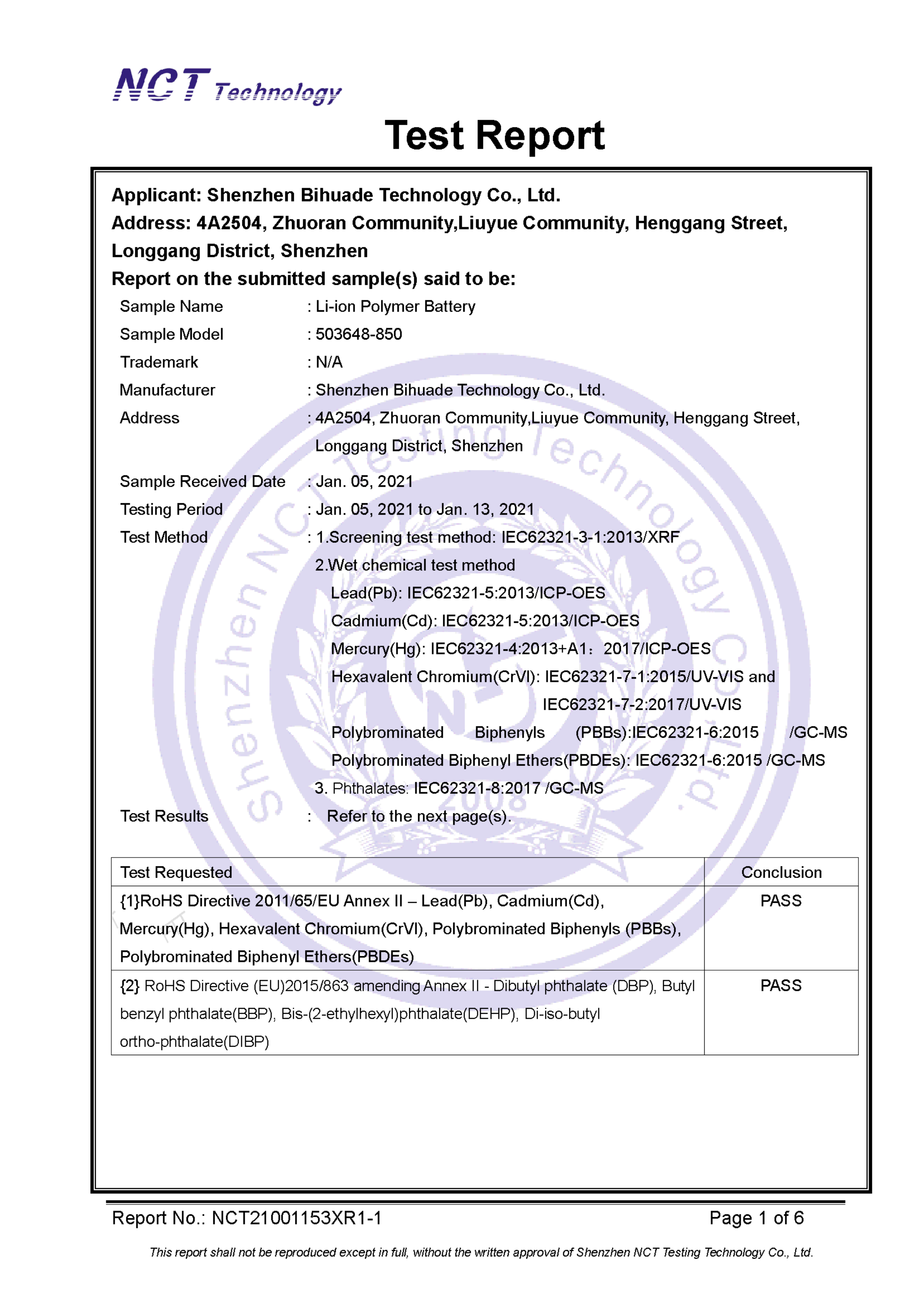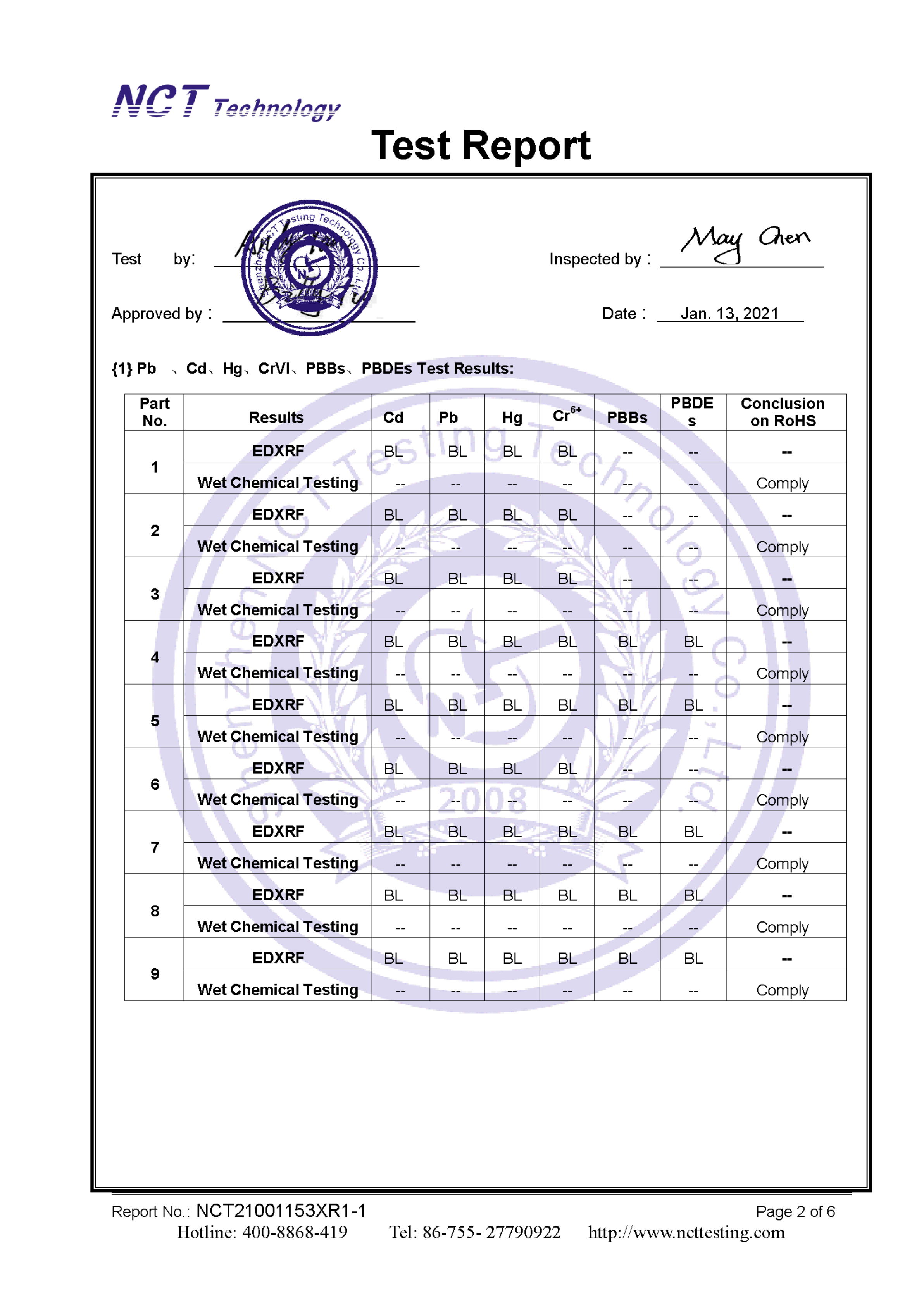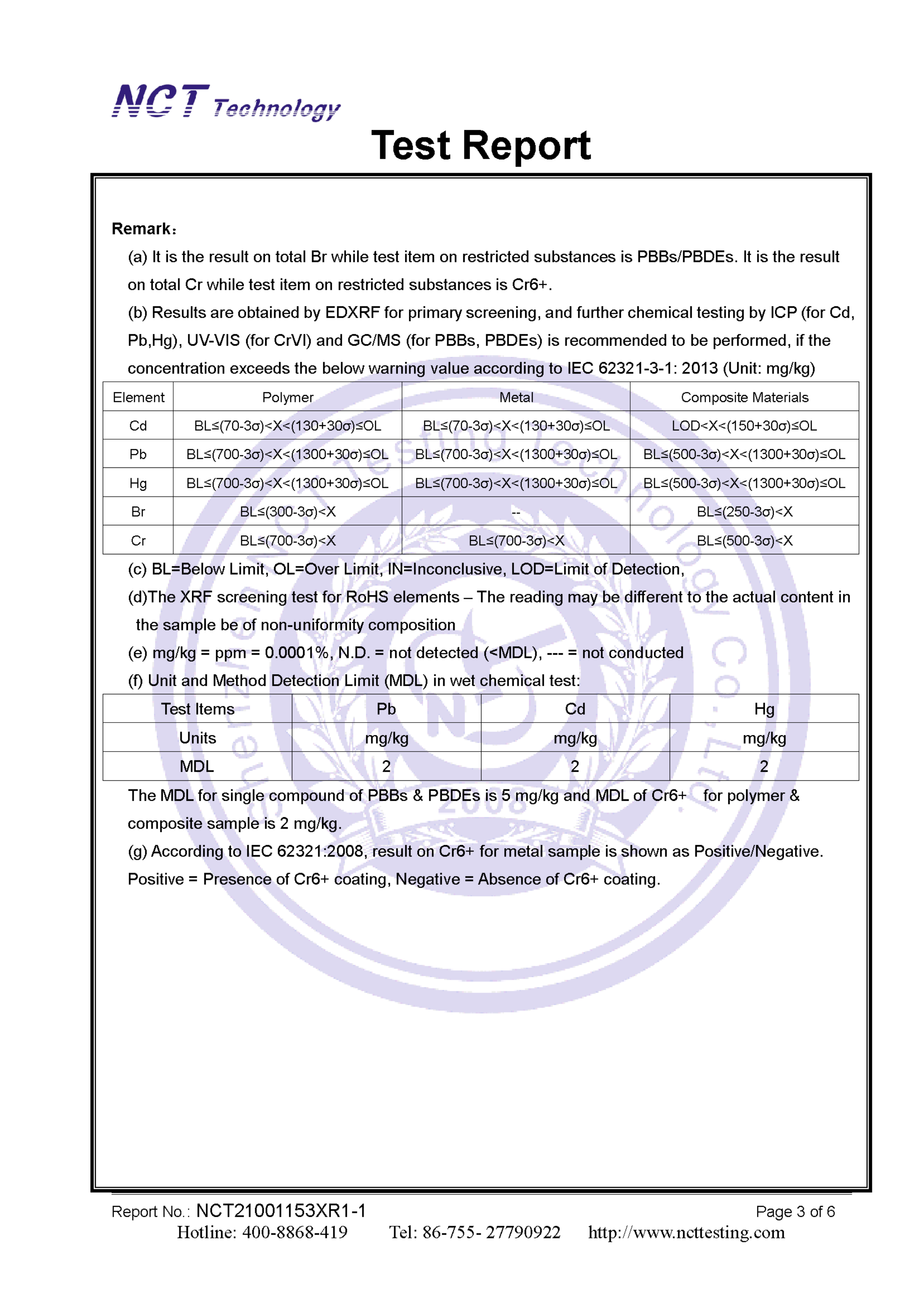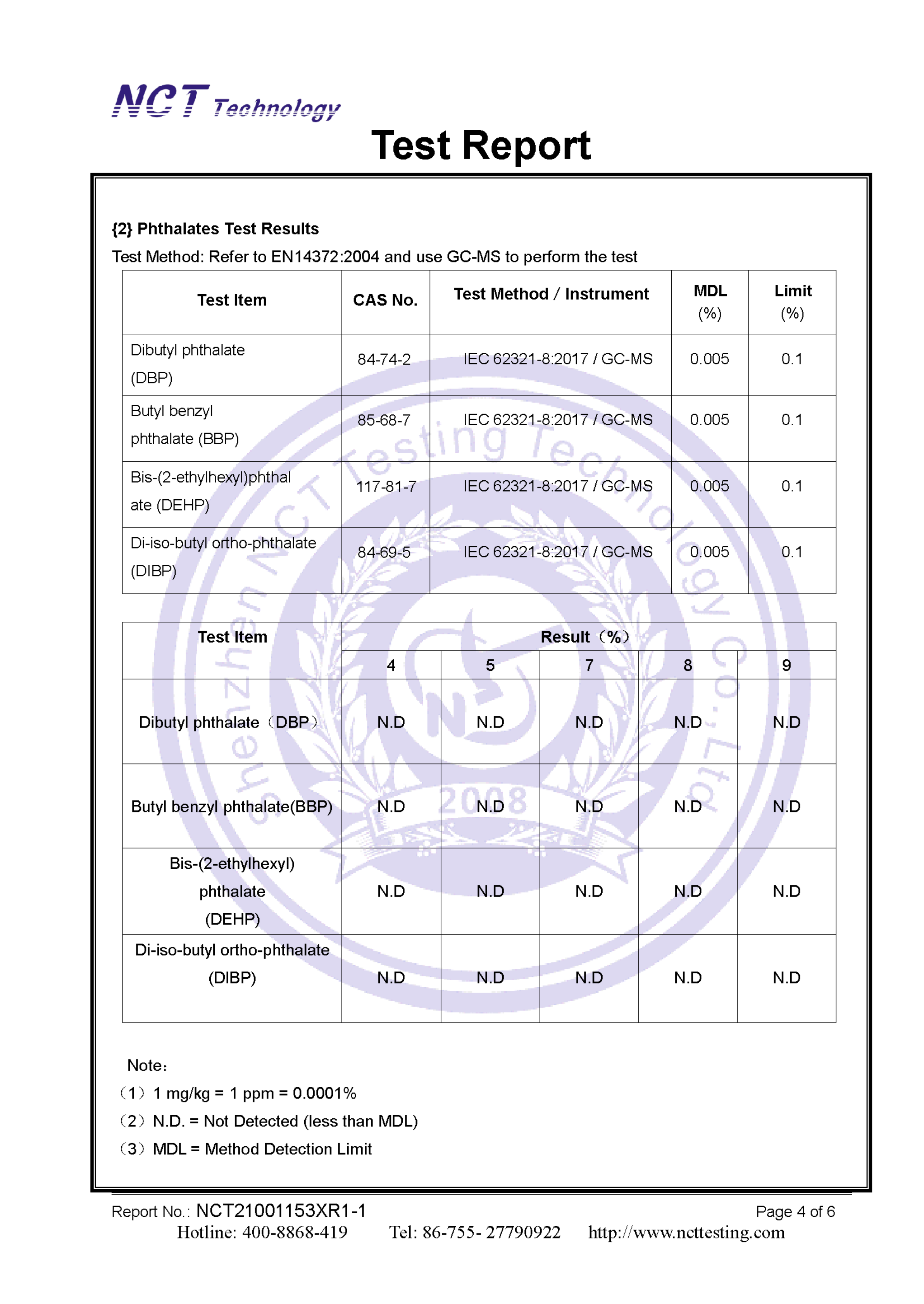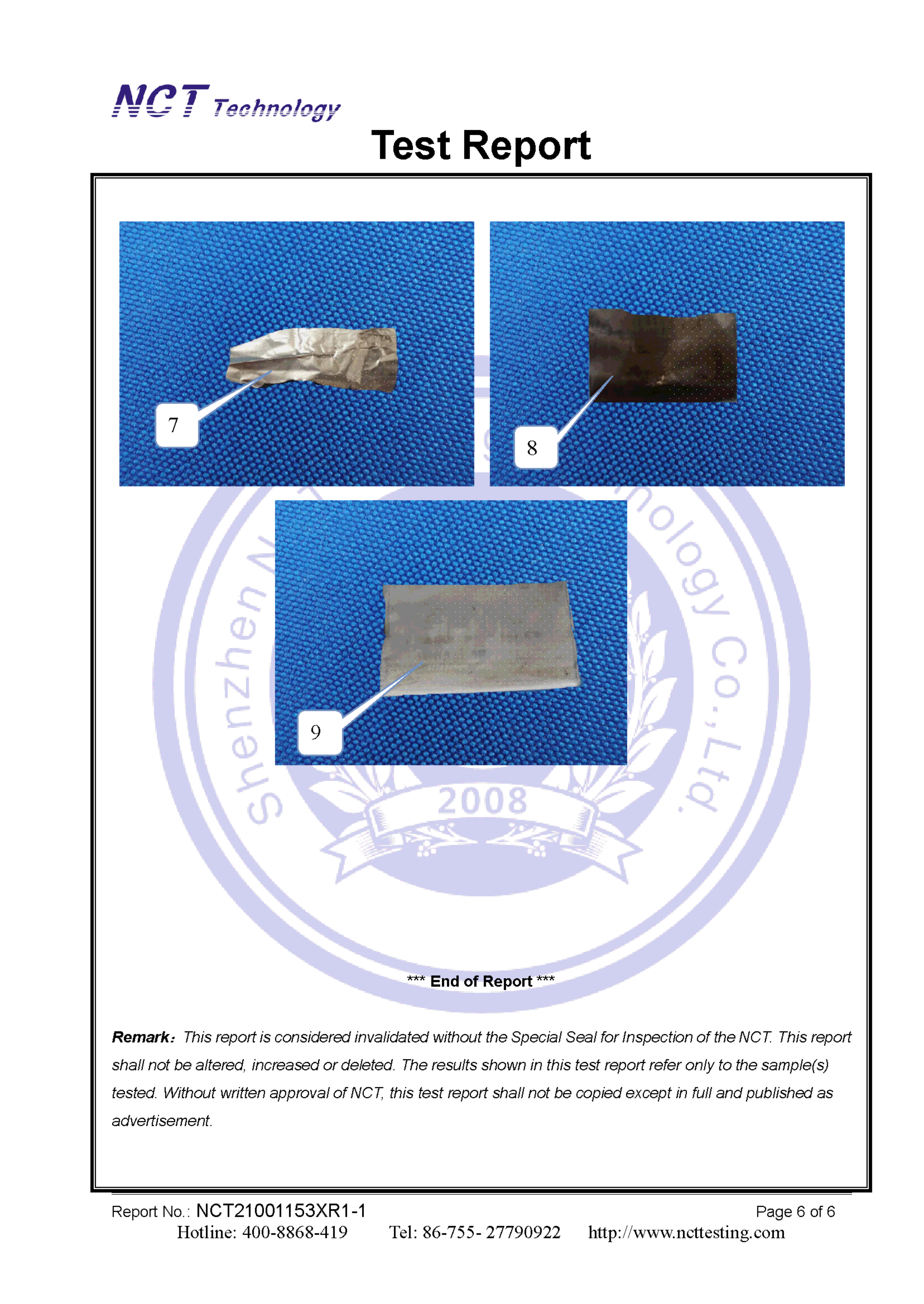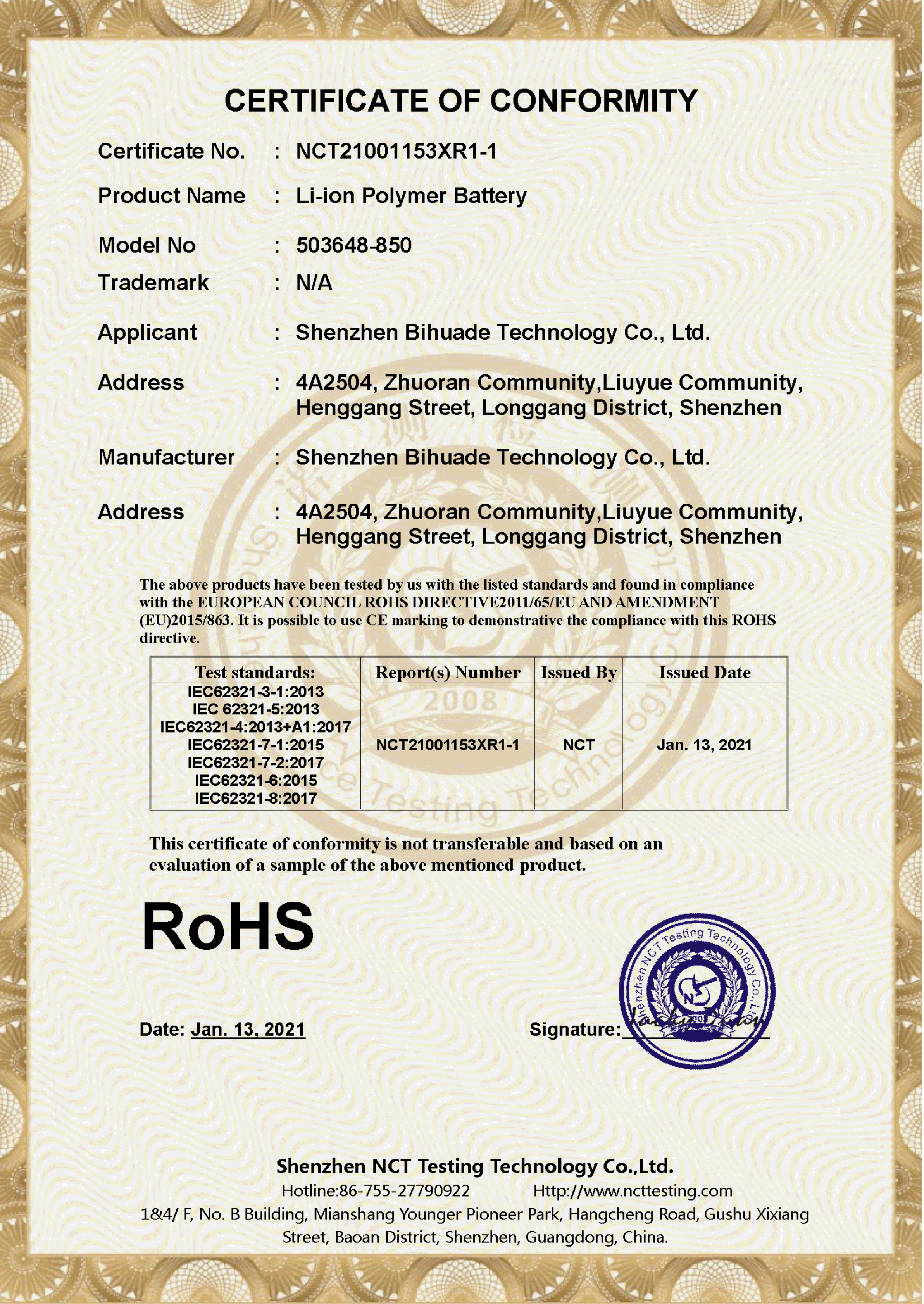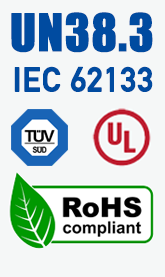RoHS Certification of Li Polymer Battery
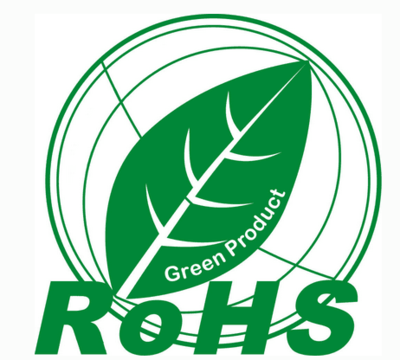
What’s the RoHS Certification?
RoHS is a mandatory standard established by EU legislation. Its full name is “Restriction of Hazardous Substances”. This standard has been officially implemented since July 1, 2006. It is mainly used to standardize materials and process standards for electronic and electrical products, making it more beneficial to human health and environmental protection. The purpose of this standard is to eliminate lead, mercury, cadmium, hexavalent chromium, polybrominated biphenyls, and polybrominated diphenyl ethers in electrical and electronic products (note: the correct Chinese name for PBDE refers to polybrominated diphenyl ethers, which is wrong ) A total of 6 substances, and it is important to stipulate that the content of cadmium cannot exceed 0.01%.
Test Applicable Products
The RoHS directive covers electronic and electrical products listed in the catalog below AC1000V and DC1500V:
1. Large household appliances: refrigerator, washing machine, microwave oven, air conditioner, etc.
2. Small household appliances: vacuum cleaner, electric iron, hair dryer, oven, clock, etc.
3. IT and communication equipment: computers, fax machines, telephones, mobile phones, etc.
4. Civil equipment: radio, television, video recorder, musical instrument, etc.
5. Lighting equipment: fluorescent lamps, etc. other than domestic lighting, lighting control devices
6. Power tools: electric drills, lathes, welding, sprayers, etc.
7. Toys/entertainment, sports equipment: electric vehicles, video game machines, automatic gambling machines, etc.
8. Medical equipment: radiation therapy instrument, electrocardiogram tester, analysis instrument, etc.
9. Monitoring/control devices: smoke detectors, thermostats, factory monitoring, and control machines, etc.
10.Vending machines
11. Semiconductor devices.
RoHS Test Sample
– Lithium-ion Polymer Cell
604260
3.7V 2000mAh 7.4Wh
+ Date: 201806
Test Method
We first send related products to professional laboratories for testing. We will test the products after they are split into single and uniform materials, including lead, cadmium, mercury, hexavalent chromium, polybrominated biphenyls (PBB), polybrominated diphenyl ether ( Whether six types of hazardous substances such as PBDE are in compliance with the requirements of the RoHS Directive. If they meet the requirements, RoHS conformity reports and certificates can be obtained.
Before submitting the product for inspection, the manufacturer must split and package it in detail in advance, and indicate the product name and number on each package. In principle, the weight required for each component test is: solid 10- 20 grams, liquid 10-20 milligrams, for easy identification.
Chemical Test
Test Item(s) | Test Method | Measured Equipment(s) | MDL | Limit |
Lead(Pb) | IEC 62321-5:2013 Ed. 1.0 | ICP-OES | 2 mg/kg | 1000 mg/kg |
Cadmium(Cd) | IEC 62321-5:2013 Ed. 1.0 | ICP-OES | 2 mg/kg | 100 mg/kg |
Mercury(Hg) | IEC 62321-4:2013 Ed. 1.0 | ICP-OES | 2 mg/kg | 1000 mg/kg |
Hexavalent Chromium Cr(VI) | IEC 62321-7-1:2015 Ed. 1.0 | UV-VIS | / | 1000 mg/kg |
Polybrominated Biphenyls (PBBs) | IEC 62321-7-2:2017 Ed. 1.0 | UV-VIS | 2 mg/kg | 1000 mg/kg |
IEC 62321-6:2015 Ed. 1.0 | GC-MS | 5 mg/kg | 1000 mg/kg | |
Polybrominated Biphenyl Ethers (PBDEs) | IEC 62321-6:2015 Ed. 1.0 | GC-MS | 5 mg/kg | 1000 mg/kg |
Test Results
Sample No. | Sample Description | Tested Items | XRF Screening Test Unit(mg/kg) | Chemical Test Unit(mg/kg) | Conclusion
|
1 | Yellow tape | Pb | BL | / | PASS |
Cd | BL | / | |||
Hg | BL | / | |||
Cr(Cr(V)) | BL | / | |||
Br(PBBs&PBDEs) | BL | / | |||
2 | Electrolytic paper | Pb | BL | / | PASS |
Cd | BL | / | |||
Hg | BL | / | |||
Cr(Cr(V)) | BL | / | |||
Br(PBBs&PBDEs) | BL | / |

